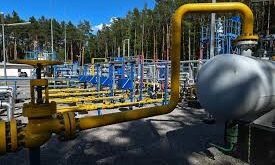China is seeing significant growth in demand for natural gas as the government encourages a switch from coal to cleaner energy. The country is in the second year of a new three-year action plan for cleaner air. under which targets have been set for reducing emissions of sulphur dioxide and nitrogen oxides and increasing the proportion of days with good air quality to 80 percent annually.
In order to achieve this goal. the government is encouraging the generation sector to switch from using coal to natural gas. particularly for domestic heating. with the aim of having natural gas account for 10 percent of energy consumption by 2020. Unsurprisingly. this policy goal is driving significant growth in natural gas demand. Gas consumption in China is expected to reach 310 billion cubic meters in 2019. a 10 percent increase on the previous year. according to the National Energy Administration.
Demand from China is expected to continue increasing going forward. although at a slightly reduced rate due to slowing economic growth. with the International Energy Agency (IEA) penciling in average annual growth in natural gas consumption of 8 percent between now and 2024. It predicts this increase in demand will be mainly driven by the ongoing switch from coal to gas for residential use.
Global supply and demand trends
China is not the only country increasing its use of natural gas. Global demand is expected to rise by more than 10 percent over the coming five years to reach more than 4.3 trillion cubic meters in 2024. according to IEA.
Much of this rise in consumption will come from fast-growing Asian economies. with the region accounting for nearly 60 percent of the total projected demand increase between now and 2024. China alone is expected to account for 40 percent of the global rise.
China is currently the world’s second largest buyer of liquid natural gas (LNG). which is more cost-effective to transport over long distances. It is expected to overtake Japan to become the largest LNG buyer in 2020. while it is already the largest gas importer in terms of both LNG and pipeline gas.
Demand from India is also increasing. particularly for LNG. with the country’s LNG imports up 8.1 percent on the previous year during the five months to the end of August at 13.49 million metric standard cubic meters. as it too looks to switch to more environmentally-friendly fuels. Even so. it still remains some way off Japan’s imports of 35.7 million metric tons in the six months to September 2019.
On the supply side. China is set to become the world’s fourth largest producer of natural gas by 2023. based on annual production growth of 5.5 percent. It is also predicted to be one of the two largest contributors to natural gas supply growth between now and 2024. after the US. with the two countries collectively accounting for more than 50 percent of total production increase. according to the IEA.
But even with this growth in production. China’s natural gas output. which reached 114.1 billion cubic meters in the first eight months of 2019. a 9.3 percent year-on-year rise. is not expected to be enough to keep pace with growing domestic needs. As a result. the IEA expects natural gas exports to become further concentrated between the U.S.. Australia and Russia.
Impact on natural gas prices
Growing demand for natural gas is likely to put upward pressure on prices. The fact that China lacks adequate gas storage capacity is also likely to contribute to price volatility. particularly due to the seasonal nature of natural gas demand for heating.
On October 14. CME Group launched the first physically-delivered LNG futures contract. which is aimed at helping market participants across the globe manage LNG price risk.
China currently has around 10 billion cubic meters of storage space. the equivalent of only around 4 percent of its annual consumption. By contrast. Germany and Italy. two other countries with high natural gas import dependency. have storage capacity equivalent to 25 percent and 33 percent respectively of their annual consumption.
Recently introduced tax cuts are likely to drive further natural gas consumption. The Value Added Tax rate for manufacturing firms was cut by 3 percent to 13 percent on April 1 this year. The move is expected to boost production among manufacturers. and by extension. demand for natural gas. VAT on natural gas itself has also been reduced from 10 percent to 9 percent. further increasing the cost effectiveness of the fuel.
Meanwhile. prices of gas markets in major regions are continuing to converge. especially between Asia and Europe. thanks to well-supplied markets and the increasing globalization of trading in natural gas. Even so. the Asian spot market still faces a higher degree of price volatility because of stronger seasonal usage patterns. Natural gas futures can be used to hedge against this price volatility.
Going forward. the expansion of the LNG trade. on the back of increased investment in LNG export projects. is likely to encourage further price convergence. At the same time. with China’s demand for LNG surging. and US production also increasing. trade in LNG could become a new partnership between the two countries.
 Iran Energy News Oil, Gas, Petrochemical and Energy Field Specialized Channel
Iran Energy News Oil, Gas, Petrochemical and Energy Field Specialized Channel




